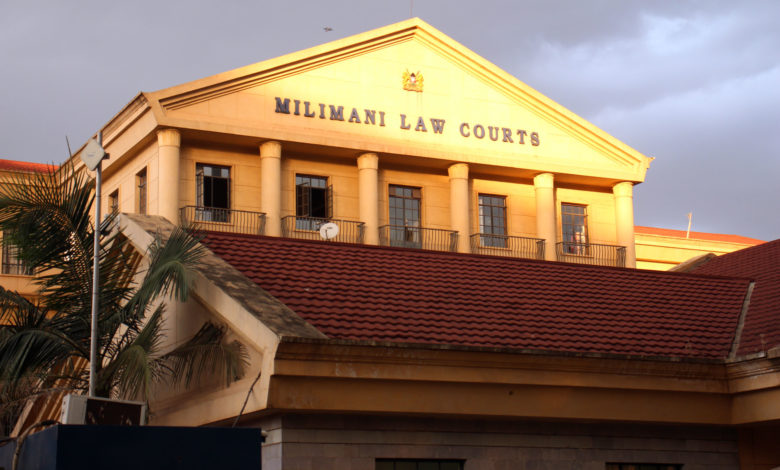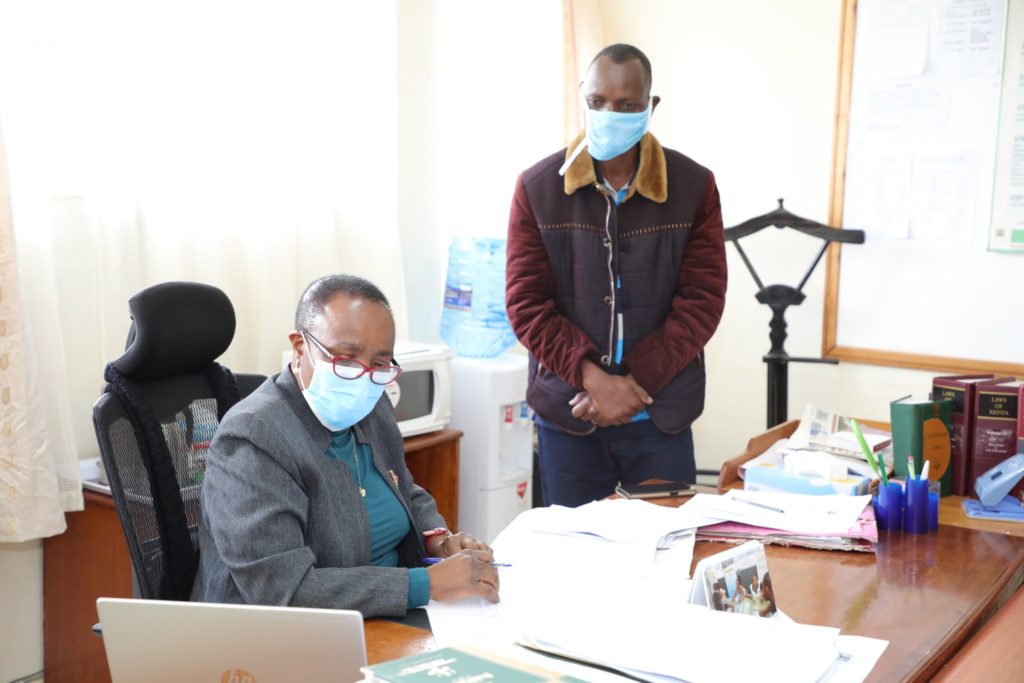Covid-19 Speeds Up Digital Judiciary
Since the declaration of coronavirus as a pandemic, the Kenyan Judiciary has been running a wide-range of transformations to control the spread. One of the initiatives is the use of digital platforms. Although there were attempts to digitalise the court process in the past, the virus is viewed as a catalyst for embracing change.

On August 17, 2020, Adrian Kamotho filed a case at the Constitutional and Human Rights Division [of the High Court] from his desk. The Advocate of the High Court of Kenya in Nairobi told RoGGKenya that with the advancement of technology things are way easier.
He added that although there were hiccups during the introduction of e-filing system, they seem to have subsided.
“The system was initially overwhelmed. But now things are smooth. I have just filed a matter at the Constitutional and Human Rights Division from my desk. I can now do it from anywhere,” said Kamotho.
Kamotho described the process as ‘awesome’. Previously, lawyers had to go to the courts. “We had to send our clerks to have our documents assessed then wait for feedback. Now the system is well automated. It automatically generates the fee payable and we can pay through Mpesa [mobile money].”
The Judiciary’s Electronic Filing Initiative (e-filling) is a digital platform the department created following restrictions imposed by the Ministry of Health on public gatherings. Initially, the Judiciary allowed courts in open air and introduced online case hearing.
A memo dated July 30, 2020 by the Chief Magistrate at the Milimani Law Courts indicated that all cases would be heard in open courtrooms on alternate days. Litigants were to sit under one roof if only a maximum of seven people were involved.
In case there had to be more people then cases were to be heard outside a restrictive room. As a result, some cases were heard under trees.
Genesis of electronic platforms
The judiciary first identified electronic platforms as crucial for court processes in 2010. A report filed on July 2010 by a task force led by Justice William Ouko suggested an ICT Policy and Master Plan to operationalise development of digital infrastructure in the judiciary.
In 2012, the Judiciary Transformation Framework (JTF), acknowledged that access to justice could be improved through ICT. As a strategic vision between 2012 and 2016, the JTF was meant to improve the Judiciary which is often understaffed with judges and underfunded.
In January 2017, Sustaining Judiciary Transformation (SJT) was launched. The programme focused on court services and clearing the huge backlog of cases.
The pandemic is viewed as a catalyst to the process of digitization. David Maraga, the Chief Justice, acknowledged the influence of the viral disease in embracing change. He said this when he launched the Electronic Filing Initiative (EFI) on July 1, 2020.
“The Coronavirus pandemic has, in a way, become a blessing in disguise,” he said.
“Moving forward, we will no longer require expert witnesses such as the Government Chemist, pathologists, ballistic experts, and handwriting experts to appear in court in person. We will use technological platforms to take their evidence from the comfort of their offices.”
Virtual court hearing
At the Garissa law Courts, for instance, a judge on August 13, heard all pleas from the local police station virtually. This was one of the first cases in the county where litigants did not appear physically in court.
On August 20, Judge PJ Wendoh of Nyahururu High Court delivered a judgment via a video conference. She was linked to the Office of the Director of Public Prosecutions (ODPP), Advocates & Nakuru Prison. Judge Wendoh also presided over a plea linked to Rumuruti Police Station. An interpreter to assist translate the session into the Samburu language also participated.

The filing system allows litigants to submit their notices, petitions, witness statements and other pieces of evidence electronically. The documents can then be shared among the case parties without printing them out.
Litigants can then use an online platform to query status of their cases, and know when it will be heard or key decisions made by the court.
The process involves working with the ODPP, the Prisons Department and the Probation Service .They are able to file court documents or verify them using a special serial system.
“It is a robust system that will fundamentally change the way judicial officers and other judicial staff work, as well as the way court users interface with the courts, “said Maraga.
“Even though case filing is the core function of the system, it represents a transformation that touches on almost all courtroom activities.”
The Judiciary’s bid to digitalise is already facing challenges, some of which the Chief Justice listed often.
In the same week the e-filing system was launched, critics said the government must assure its longevity by providing sufficient funds.
“The President must ensure that the judiciary is adequately funded to sustain this noble project,” Nelson Havi, the President of the Law Society of Kenya (LSK) said on July 1.
According to the 2020/21 budget, the Judiciary was allocated Sh18.1 billion, down from Sh18.8 billion in 2019.
Need for legal protection
Havi also advised that there must be a law, as soon as possible, to ensure that all digital programmes of the court are legally protected.
“There is a possibility of the e-registry and the e-courtroom being abused. We have seen it in the recent past how the freedom created in the internet space has been abused,” he said, referring to illegal data mining or manipulation.
Maraga admits the platform may be meaningless if some people can’t access it. “If what we are launching today locks out sections of the community or is discriminatory and shows partiality to a class of litigants, we will have failed,” Maraga said. “Conscious of this need, we have taken care to ensure that everyone is well served by all the technological initiatives we adopt.”
Mr. Havi, LSK President noted that ensuring reliable electricity to run the systems was a challenge. He argued it would be pointless for signals to disappear in the middle of a case because there has been a power blackout.
130 out of 132 courts in Kenya had been connected to the internet by August 14, 2020. Only 32 of them have a running electronic transcription system, 60 of them have installed a case tracking system while the remaining 72 will have the system by end of October.
The system is expected to help ease more backlog by identifying delayed cases, Maraga explained in his speech. With these digital programmes in place, it is possible to go through a complete court process without appearing in court.
Electronic Justice is becoming a global trend. Romania, for example, recently introduced audio recordings in all courts with the help of the World Bank.
A Report by the World Bank revealed that the process has helped increase both efficiency and accountability of the Romanian judiciary.
The Romanian National Judicial Inspection also uses the recordings to verify judges’ behavior and has used them in a range of corruption and misconduct cases.
Previously, handwritten notes were kept by clerks but were unreliable for accountability purposes. The recordings are available to trial participants within one day upon request and are also highly valued as a practical tool. Currently, hundreds of recordings are requested every day.
What journalists should do:
- Report on hiccups faced in digitalisation of court process and how the judiciary is addressing them.
- Report on the pace of case processing in the digital era to determine if it is fast, slow or the same.
- Report on the new additions on the digitisation plan.
- Find out how digitalization has impacted on court case backlog.
- Report on general public usage of the courts in the digital era.
- Document the experiences of those who have gone through the digital court process and how they feel about it.
By Aggrey Mutambo